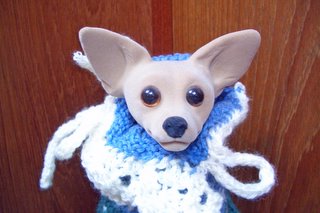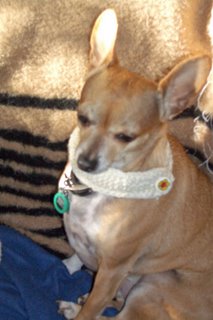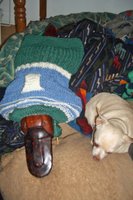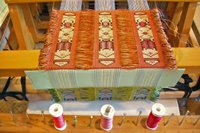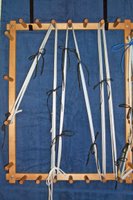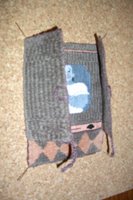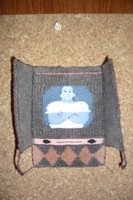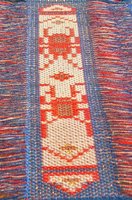 Using white in taquete is problematic. You can't see it from the photo but the white portion has a pink cast on the blue border bookmark. The white part on the red border bookmark has a slight blue tinge. You might expect the opposite; thinking that the border color will bleed into the white.
Using white in taquete is problematic. You can't see it from the photo but the white portion has a pink cast on the blue border bookmark. The white part on the red border bookmark has a slight blue tinge. You might expect the opposite; thinking that the border color will bleed into the white. The actual result has to do with the order in which I weave the colors. The order impacts which color stacks on top of each other. I am weaving four colors each pass and then packing them in with the beater. Each color finds its natural place based on the order it is woven. I could have achieved either result depending upon the order I wove the thread colors. If the beetle outline color [let's say it's red] follows the white - - it will stacked right under the white. The red then permeates the white to give it a cast of red - hence showing up a slight pink. The blue went first so it's at the bottom and has no impact visually on the white section.
The actual result has to do with the order in which I weave the colors. The order impacts which color stacks on top of each other. I am weaving four colors each pass and then packing them in with the beater. Each color finds its natural place based on the order it is woven. I could have achieved either result depending upon the order I wove the thread colors. If the beetle outline color [let's say it's red] follows the white - - it will stacked right under the white. The red then permeates the white to give it a cast of red - hence showing up a slight pink. The blue went first so it's at the bottom and has no impact visually on the white section.This is why one always must test the colors in taquete since what you think will come out usually doesn't. Something to remember when selecting colors for taquete particularly when using light or translucent colors.


